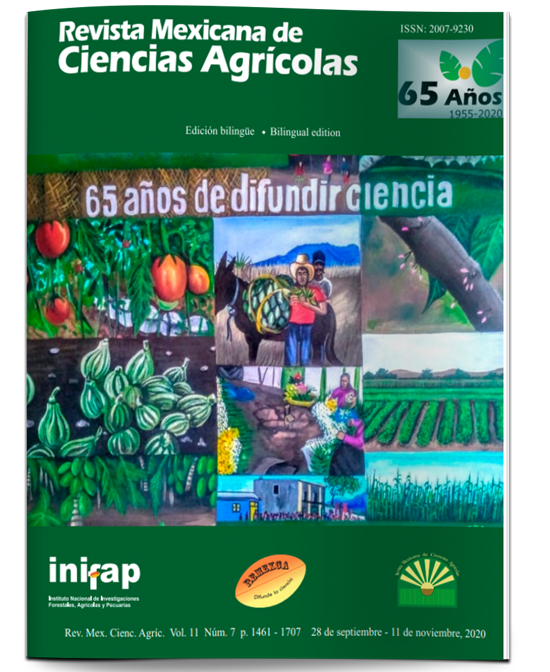Embryogenesis and organogenesis of Mexican creole avocado
DOI:
https://doi.org/10.29312/remexca.v11i7.2274Keywords:
avocado, Drymifolia, in vitro regeneration, micropropagationAbstract
The Drymifolia avocado variety (Persea americana Mill.) is generally used as rootstock, so it is important to implement somatic embryogenesis and in vitro organogenesis techniques for its genetic improvement, conservation and clonal propagation. In this work, direct and indirect somatic embryogenesis and organogenesis of the Drymifolia variety were evaluated. Germination of the mature somatic embryos was induced with 0.5 mg L-1 of 6-N-benzyl amino purine (BAP) and 1 mg L-1 of gibberellic acid (GA3). Of the six accessions evaluated, Celaya 79, Comonfort 53, San Miguel, BG24, BG181 and Zutano, only San Miguel responded to the embryogenesis process. In direct embryogenesis, the highest regeneration efficiency was obtained with 0.2 mg L-1 of picloram (46%) and 10 mg L-1 of ANA (40%). In indirect embryogenesis, the San Miguel accession formed callus with 0.2 mg L-1 of picloram and had a regeneration efficiency of 45%, conserving its regeneration potential for up to six months. Regarding organogenesis, decapitated immature zygotic embryos were cultured in medium with or without growth regulators and all six accessions responded positively to both conditions. The Comonfort 53 accession had higher regeneration efficiency (54%) with growth regulators. This study carried out from 2016 to 2018, provides a new and promising approach for the regeneration and multiplication of P. americana var. Drymifolia through zygotic embryos.
Downloads
Downloads
Published
How to Cite
Issue
Section
License
The authors who publish in Revista Mexicana de Ciencias Agrícolas accept the following conditions:
In accordance with copyright laws, Revista Mexicana de Ciencias Agrícolas recognizes and respects the authors’ moral right and ownership of property rights which will be transferred to the journal for dissemination in open access. Invariably, all the authors have to sign a letter of transfer of property rights and of originality of the article to Instituto Nacional de Investigaciones Forestales, Agrícolas y Pecuarias (INIFAP) [National Institute of Forestry, Agricultural and Livestock Research]. The author(s) must pay a fee for the reception of articles before proceeding to editorial review.
All the texts published by Revista Mexicana de Ciencias Agrícolas —with no exception— are distributed under a Creative Commons License Attribution-NonCommercial 4.0 International (CC BY-NC 4.0), which allows third parties to use the publication as long as the work’s authorship and its first publication in this journal are mentioned.
The author(s) can enter into independent and additional contractual agreements for the nonexclusive distribution of the version of the article published in Revista Mexicana de Ciencias Agrícolas (for example include it into an institutional repository or publish it in a book) as long as it is clearly and explicitly indicated that the work was published for the first time in Revista Mexicana de Ciencias Agrícolas.
For all the above, the authors shall send the Letter-transfer of Property Rights for the first publication duly filled in and signed by the author(s). This form must be sent as a PDF file to: revista_atm@yahoo.com.mx; cienciasagricola@inifap.gob.mx; remexca2017@gmail.
This work is licensed under a Creative Commons Attribution-Noncommercial 4.0 International license.



